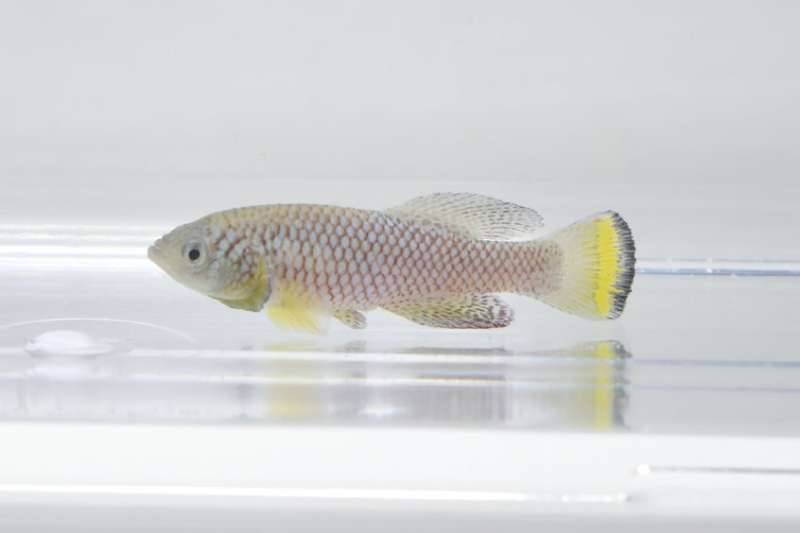Neutral evolution shapes lifespan and aging

Different African killifish species vary extensively in their lifespans—from just a few months to several years. Scientists from the Max Planck Institute for Biology of Ageing in Cologne investigated how different lifespans have evolved in nature and discovered a fundamental mechanism by which detrimental mutations accumulate in the genome causing fish to age fast and become short-lived. In humans, mutations accumulate mainly in the genes that are active in old age.
Species in nature vastly differ in lifespan, from a few hours in adult mayflies to centuries in whales. Natural selection should favour long-lifespan, because in principle a longer life leads to more offspring and higher chance to reproduce and transmit genes to the next generation. But then why do short-lived species evolve? To address this question, Rongfeng Cui from Dario Valenzano's group at the Max Planck Institute for Biology of Ageing, investigated the African killifish family.
"African killifishes live in a wide range of habitats, from rainforests to arid savanna woodlands. Based on the water availability in the environment, they live long or short. This great diversification constitutes a natural experiment of different lifespan strategies, making killifish a unique system for studying life history evolution," explains Dario Riccardo Valenzano, senior author of this publication.
Expanded genome with detrimental mutations
The researchers sequenced and analysed the genome of 45 African killifish species and compared the genome of short- and long-lived species. They found that short-lived species have an expanded genome, full of highly redundant DNA sequences between and within genes. Additionally, the genome of the short-lived fish accumulates detrimental mutations. Detrimental mutations occur throughout the genome, including in genes coding for central processes in the fishes, such as DNA repair, metabolism control, mitochondrial function and in other known aging genes.
"These fishes do not seem to be short-lived because being short-lived is good for them or because it is an adaption to their environment. In fact, in longer rainy seasons they could in principle live longer and keep reproducing," says Valenzano. "Rather, natural selection simply does not work as efficiently for genes important in late life. It doesn't matter if a mutation makes you a little bit sick when you are old, because you have reproduced already and transmitted that mutation to your offspring. We found that this basic principle explains the expanded genome and the accumulation of detrimental mutations in short-lived killifish."
Human genomes
In the human genome the researchers could observe that genes which accumulate detrimental mutations are highly associated with aging. "We found that the mutation burden of a gene goes hand-in-hand with when it is expressed. In other words, gene expressed in late life are more likely to carry detrimental gene variants," explains Valenzano. The researchers found many genes that met this criterion but were not known to be related to the aging process yet. These genes could be interesting for aging research in future.
More information: Rongfeng Cui et al. Relaxed Selection Limits Lifespan by Increasing Mutation Load, Cell (2019). DOI: 10.1016/j.cell.2019.06.004
Journal information: Cell
Provided by Max Planck Society





















